Effective Solutions for Bathtub Drain Hair Clogs
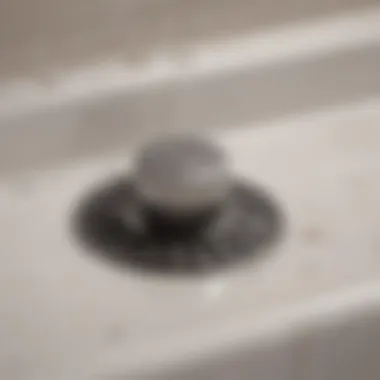
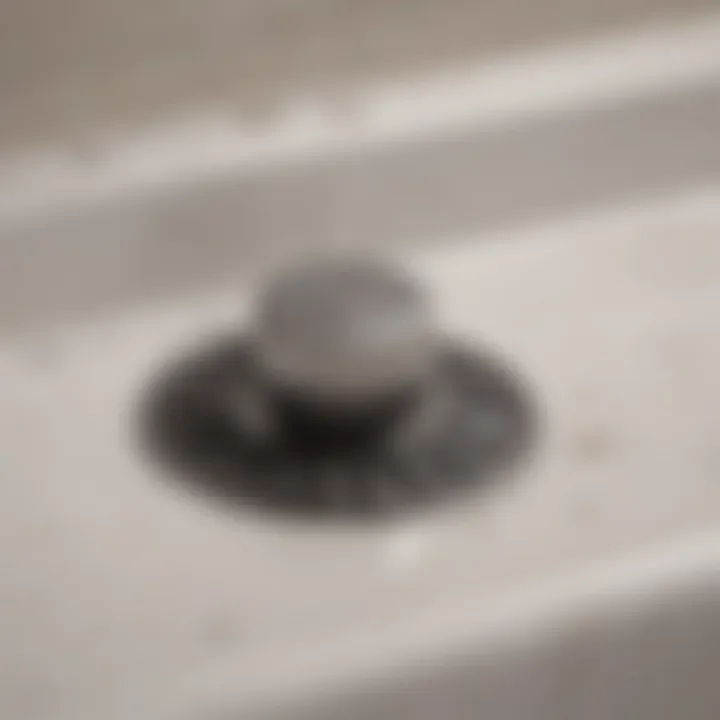
Intro
Bathtub drain clogs are a common nuisance for many homeowners and renters alike. Hair accumulation is one of the leading causes of these disruptions, often requiring immediate attention to avoid further complications. This article aims to provide practical solutions and indispensable proactive measures to effectively manage and alleviate the frustrations instigated by hair-related clogs.
The conversation surrounding bath fixtures, drainage, and plumbing often focuses solely on aesthetics and comfort, yet fails to recognize the broader implications of proper drainage systems. Effective management of bathtub fungi and buildups extend beyond merely solving clogs. It encompasses both home maintenance practices and personal hygiene standards routinely observed in living spaces. As we explore the core causes, preventative strategies, and solutions, it is crucial to comprehend the holistic significance of keeping our bathing areas functional and pleasant.
--
Addressing the Causes
Understanding the root causes of bathtub drain clogs due to hair is crucial for effective solutions. This section elaborates on various contributing factors that result in these issues.
Hair Types: Different hair types contribute differently to clogging. Long and thick hair tends to tangle easily and accumulate around drain mechanisms. Short and finer strands can more easily pass through and often connect with soap residues to form solid and stubborn clogs.
Installation Issues: Old or improperly fitted drain grates may not adequately catch or redirect hair, leading to premature build-up. Regular checks and potential upgrades play a role in alleviating recurrent problems.
Infrequent Cleaning: Allowing hair and debris to build over time creates layers that may eventually block water flow completely. Preventative cleaning habits are often sidelined but should be emphasized.
Practical Solutions for Unclogging
Unclogging methods can vary based on severity and specific circumstances. Here, we present a range of practical solutions designed for diverging levels of drain obstructions.
- Manual Removal:
- Chemical Cleaners:
- Baking Soda and Vinegar Method:
- Boiling Water Flush:
- Use a hair hook or drain snake to effectively dislodge and remove hair from the drain. A simple yet effective tool allows for precise targeting and easy extraction without manual contact necessarily.
- Ensure that you carefully maneuver down the drain, as doing so too forcefully may risk damaging plumbing.
- If manual factors do not work, commercial drain cleaners can assist. Choose carefully and follow all instructions to avoid harming sensitive internal pipes. Products like Drano or Roto-Rooter perform well in dissolving common clogs.
- Stay informed about binding agents as some chemicals have been criticized for environmental prejudices or inefficacies.
- Combine 1 cup of baking soda with 1 cup of vinegar. Pour the mixture into the drain, which creates a fizzing reaction that tackles blockages through bubbling action. Allow it to sit for 30 minutes before flushing with hot water.
- Regularly flushing hair away with boiling water can help eliminate smaller obstructions. Pour it slowly. Careful movement ensures that pipe expansions do not yield adverse outcomes.
Foreword to Clogged Bathtub Drains
Bathtub drain clogs caused by hair accumulation are a common challenge faced by many homeowners and renters alike. It may seem like a trivial issue at first, but understanding the nuances of this phenomenon is crucial for effective home maintenance. When water begins to back up or drain slowly, it indicates that something is obstructing the flow. This concern not only disrupts daily routines but also can lead to more profound problems if not addressed promptly.
a a survey conducted by plumbing professionals, more than 80% of plumbing issues stem from clogs, and a significant proportion of these are attributed to hair. Managing a clogged bathtub drain involves technical knowledge about how drains operate, the types of hair that are problematic, and the various methods that can be employed for resolution.
Moreover, regular drainage maintenance can serve numerous benefits. Ignoring this issue can result in unpleasant odors, increased wear on the plumbing, and potentially costly repairs over time. By learning about bathtub drain clogs, you are not only safeguarding your bathroom’s aesthetics but also its functionality.
Understanding the causes and potential solutions equips individuals with the knowledge needed to tackle this matter decisively. This guide will provide insights into why hair gets stuck, symptoms to recognize, effective methods for prevention, and strategies for keeping your drains clear in the future. By being proactive, you’re ensuring that your bathing space remains clean and efficient, upholding the value of your property while providing a pleasant experience every time you step in for a wash.
"Taking action against clogged drains at the first sign is key to avoiding larger plumbing issues."
Thus, this section serves as a launching pad into understanding what causes clogs and how one can address them effectively.
Understanding the Mechanism of Bathtub Drains
Understanding how bathtub drains operate is key to addressing clogs and ensuring proper functionality. A solid grasp of the components and water flow intricacies not only reveals why hair clogs are so prevalent but also offers effective strategies to prevent and address them. With knowledge in these areas, homeowners can avoid costly plumbing repairs and maintain optimal hygiene in their bathrooms.
Components of a Bathtub Drain
Bathtub drains consist of several components that work together to facilitate water flow out of the tub. Key elements include:
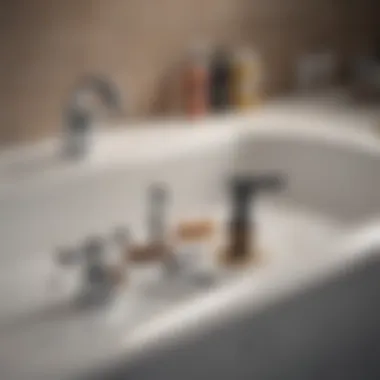
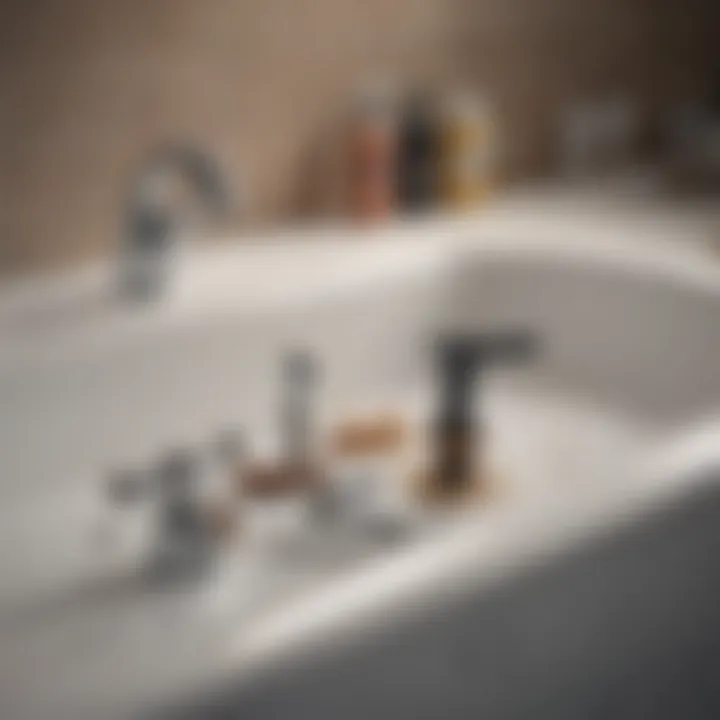
- Drain Flange: The visible part at the top of the drain, connecting the bathtub to the plumbing system.
- Overflow Drain: This serves as a secondary outlet for water, preventing overflow and adjusting the water level in the bathtub.
- P-Trap: This U-shaped section of pipe captures debris and creates a water seal that stops sewer gases from entering the home.
- Drain Pipe: The pipe leading to the sewer or septic service, routing the water away from the home.
Each component plays an essential role in managing flow and preventing blockages. Understanding how these parts function individually and together can help identify where hair buildup occurs and how to resolve it effectively.
How Water Flows Through Drainage Systems
The drainage system of a bathtub operates on a straightforward principle: gravity assists water movement. As a user takes a bath, water enters through the drain and begins to flow out, following these phases:
- Gravity Drainage: Water exits the tub through the drain flange and moves down the overflow drain if applicable.
- Travel Through the P-Trap: The water then makes its way through the P-Trap that captures debris along the way, including hair that may have come loose during the bath.
- Routing Off to the Sewer: Once cleared of any accumulated debris, the water moves through the main drain line, either via direct drainage or through the levels of plumbing in a home.
However, hair or other materials can disrupt this flow. When hair collects in critical locations, it restricts the water's journey, leading to clogs. Homeowners can take notice of system indicators like slower draining or unusual sounds, learning how to address them efficiently before they escalate into larger issues.
By understanding the mechanisms of bathtub drains, individuals arm themselves with important knowledge that aids in effectively resolving clogs and maintaining their drainage systems.
Hair Accumulation: A Primary Culprit
In addressing clogged bathtub drains, it is crucial to understand the role of hair accumulation. While many factors contribute to drain clogs, hair is often the most persistent and troublesome one. Understanding the significance of this issue aids in developing efficient strategies for either preventing or resolving the problems associated with blocked drains.
Clogs from hair affect not only the functionality of the drainage system but also hygiene and maintenance of bathing spaces. They can lead to slow drainage, unpleasant odors, and more severe plumbing issues if not addressed promptly. Moreover, recognizing hair accumulation as a primary contributor allows homeowners and renters to take necessary precautions and remedial actions more effectively.
Why Hair Gets Stuck
Hair clogs occur for several reasons. First, the coiled structure of human hair tends to easily latch onto rough surfaces inside pipes. Over time, hair strands entwine with soap residue, dirt, and other biological debris, producing lumps that progressively restrict water flow.
Another factor affecting hair retention in drains is water temperature. Hot water can soften the leftover residue and hair fibers, making them more prone to amalgamating as they flow through pipes. Lower temperatures may cause substances to harden and bind more gradually, culminating in exceptions to the clog issue.
Additionally, grinding disposals in kitchen sinks may fail to fully eliminate hair that travels down those entryways, further enhancing blockage likelihood in connected bathing systems. This phenomenon suggests that failing to identify all routes of hair entry or disposal can heighten vulnerability to plumbing failures.
Types of Hair Most Likely to Cause Clogs
Certain hair types exhibit characteristics more likely to contribute to clogs. Recognizing these can help users in taking preventative measures. Here's a breakdown:
- Human Hair: The most common cause of clogs. The average hair strand length varies, affecting potential entanglement. Longer strands tend to tangle more easily.
- Pet Hair: Dogs and cats shed copious amounts of fur, which can enter the bathtub drain. Mats of fur can form clogs alongside human hair.
- Synthetic Hair: Hair extensions or wigs can also degrade and contribute to drainage issues. As these strands are not biodegradable, they can aggregate with natural hair and soap remnants to create formidable blockages.
Understanding these factors allows individuals to develop efficient strategies. Regular cleaning, scraping debris away from drain entrances, or employing preventative measures can help mitigate hair's impact on draining systems.
Recognizing Symptoms of Clogged Drains
Recognizing the symptoms of clogged drains is pivotal in maintaining an effective bathtub drainage system. When a clog becomes severe, it can lead to more significant plumbing issues and costly repairs. Awareness of these symptoms enables homeowners and renters to take action timely, minimizing damage and disruption in the household.
Monitoring for observable signs of drainage deterioration is crucial. Ignoring early indicators can lead to extensive damage that not only complicates unclogging efforts but also impacts the overall hygiene of the bathroom environment.
Slow Drainage
One of the first red flags of a looming clog is slow drainage. Water taking longer than usual to disappear down the drain may seem minor initially, but it serves as an important prompt to investigate further.
Slow drainage often signals the backup of hair, soap scum, or other debris obstructing the flow. Simple observations, such as lingering water after a bath or shower, can point towards imminent plumbing trouble. They suggest that intervention might be required soon, if action is not taken; the issue could escalate into a complete blockage.
Monitoring the drainage speed is essential. Regularly cleaning drainage covers will help avoid debris compromise at the entrance, allowing water to flow freely.
Unpleasant Odors
The second symptom typically experienced with clogs is unpleasant odors emanating from the drain. These odors are frequently tied to stagnant water trapped within the clogged pipe system.
Stagnation leads to the build-up of bacteria and decaying organic matter, contributing to a much unhygienic environment. Homeowners should be alert; if they start to detect foul smells, it indicates that drainage blockage has likely already occurred or is in process.
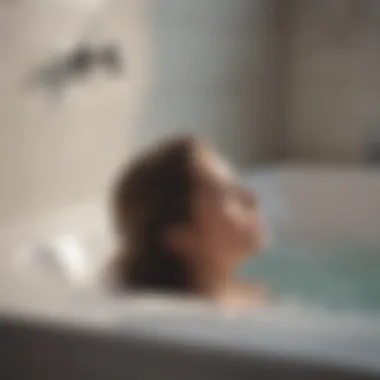
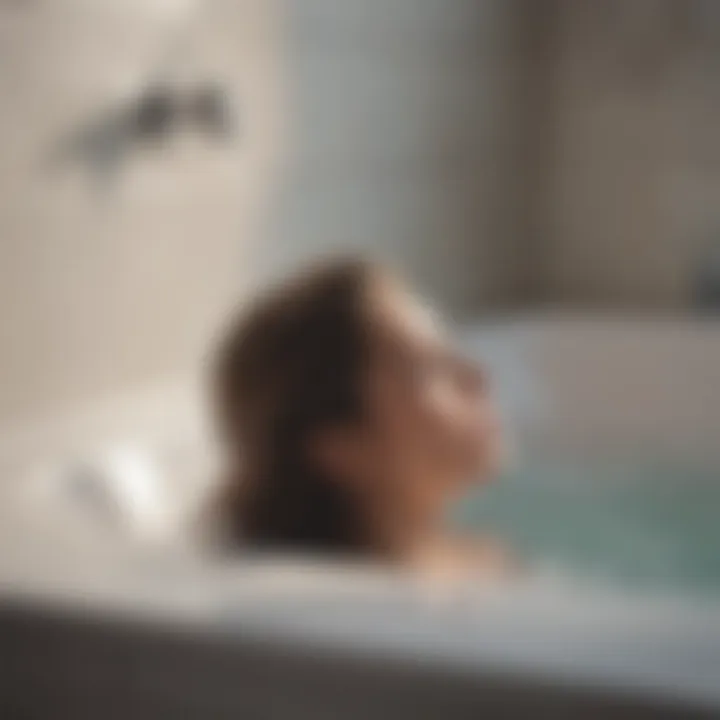
To mitigate this issue, employing natural or chemical solutions could alleviate smells, but consistent examination of the drain remains essential. Sapce using methods like baking soda and vinegar for maintenance, rather than relying solely on commercial harsh chemicals is a benefit.
Water Backups
Water backups are one of the most concerning symptoms in detecting clogged drains. This condition occurs when water cannot drain properly, leading it to rise in the tub or sink, potentially spilling onto the floor.
Experiencing water backups should trigger an immediate response. This scenario indicates that blockage in the drainage system has progressed. Nipping this issue in the bud prevents potential water damage that could affect the integrity of home's structure, paint, and floors.
In this context, it is beneficial to regularly monitor drains and investigate any abnormal water behavior promptly before encountering complete drainage failure.
By identifying symptoms early, homeowners can undertake measures to manage clogs, preserving their bathing spaces and maintaining overall hygiene, thus avoiding more significant inconveniences down the line.
Methods for Unclogging Hair-Blocked Drains
Clogs due to hair infiltration present a recurring problem in household plumbing. Understanding methods for unclogging hair-blocked drains is crucial. These methods not only provide immediate solutions but also help maintain healthy and functioning drainage systems. Each method has its unique benefits, considerations, and suitability depending on the situation.
Manual Removal Techniques
Manual removal techniques focus on physical extraction of hair clogs from the drain. This method might employ tools like drain snake, hook devices, or even simple hands if accessible and safe.
Steps for Manual Removal:
- Inspect the Drain: Check the drain for any visible hair clumps that you can reach.
- Use Gloves: Always use rubber gloves to maintain hygiene.
- Fetch Hair Out: Utilize a drain snake or a coat hanger to pull out the hair from the drain.
- Dispose Properly: Never flush the hair down the toilet; dispose it in the trash.
Using manual techniques is cost-effective and works well for minor clogs. Notably, they do not pose significant risks, unlike some chemical substances. However, if the clog is deeper down, other techniques may be required.
Chemical Solutions: Pros and Cons
Chemical solutions serve as a swift, albeit controversial, alternative for hair clog removal. Products vary; some are formulated specifically to break down organic matter like hair.
Pros:
- Convenience: They're easy to use; just pour into the drain.
- Rapid Action: Many dissolve clogs in a matter of minutes.
Cons:
- Potential Damage: Harsh chemicals can corrode pipes, particularly if used frequently.
- Environmental Concerns: VOCs and other toxic substances may harm aquatic life.
Given these points, users should weigh the necessity of chemical treatments against their overall impact on plumbing and health. Such solutions may suit urgent situations but are not recommended for routine maintenance.
Using Tools Like Plumbers' Snakes
Plumbers' snakes are specialized tools designed to navigate into pipes and clear obstructions. They have several types, such as manual snakes and electric versions, which differ in the approach and effectiveness.
Using a Plumbers' Snake:
- Turn the water off: Ensure nothing is draining while you work.
- Insert the Snake: Gently push it into the drain until resistance is felt.
- Rotate or Push: Twist and push the snake to break up or catch the clog.
- Withdraw and Clean: Once satisfied the clog is resolved, pull out the snake and clean it.
Plumbers' snakes are beneficial for larger or more progressive problems. They require some skill to operate effectively but provide excellent depth of reach into plumbing systems. This technique, when mastered, can prevent the persistence of hair clogs in the future.
Manual removal, chemical solutions, and specialized plumbing tools are options all homeowners can consider to address hair blockages effectively.
While each technique has its specific merits, understanding when to apply them is essential for maintaining the hygiene and efficiency of your bathtub drains.
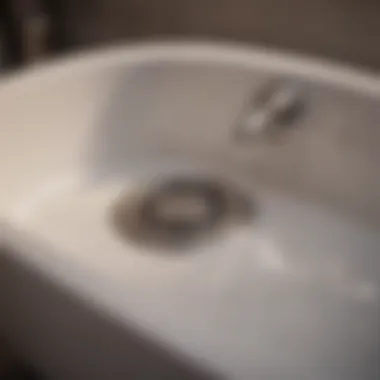
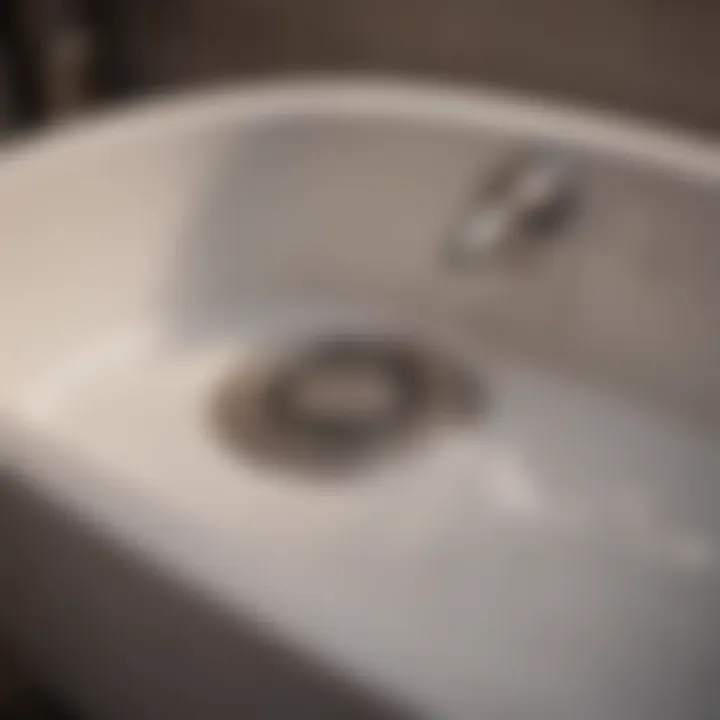
Preventative Measures Against Future Clogs
Preventative measures are crucial when it comes to maintaining clog-free bathtub drains. Engaging in proactive strategies not only saves homeowners time and hassle but also helps to avoid costly plumbing fees in the long run. While occasional clogs may seem inevitable, focusing on preventative maintenance can significantly reduce occurrences that disrupt daily routines.
Implementing a few straightforward habits ensures that hair and debris do not accumulate unchecked. Actively managing drainage conditions means improved water flow and user satisfaction.
Regular Maintenance Strategies
Regular maintenance strategies consist of routine cleaning practices designed to keep the drain clear. This can be a simple task that, when done consistently, acts as the first line of defense against serious clogs.
- Routine Cleaning: A little bit of hygiene goes a long way. Set a regular schedule to clean your bathtub and its edges, paying special attention to the drain area. Use a soft brush to scrub away any hair, soap scum, or mineral deposits that may settle around the drain.
- Hot Water Flush: Periodically flush your drain with boiling water. This dissolves any grease or soap remnants trying to cling to the plumbing.
- Biological Cleaner Use: Opt for environmentally friendly biological drain cleaners occasionally. These products can help break down organic debris without posing harm to your plumbing system.
Installing Drain Screens
Installing drain screens offers another critical layer of protection against hair clogs. These are simple, grill-like devices that impede hair and larger pieces of debris from slipping through the drain. The benefits of using drain screens include:
- Easy to Install: Most screens can easily be placed over the drain without special tools, making installation a straightforward process.
- Maintenance Friendly: A drain screen generally requires minimal effort to maintain. Remove it, clean off debris, and quickly reinstall it.
- Cost-Effective: They are typically inexpensive preventive solutions with a long-lasting lifespan. This small expenditure is worthwhile when considering reduced plumbing interventions.
Overall, preventing clogs begins with understanding how hair interacts with plumbing. Routine maintenance and proper tools, like drain screens, provide the means to maintain hair-free drains effectively.
The Role of Hygiene in Drain Maintenance
Proper hygiene in the bathroom extends beyond simple cleaning tasks; it involves maintaining the integrity of your plumbing systems. A well kept drain contributes significantly to overall bathroom hygiene. If hair clogs arise unaddressed, they can become breeding grounds for bacteria. Understanding the connection between drain maintenance and hygiene helps emphasize its importance.
Maintaining cleanliness in drains can yield several advantages, which include:
- Reducing Odors: Clogs often cause unpleasant smells from stagnant water and bacteria buildup.
- Enhancing Drain Efficiency: Clogged drains restrict water flow, leading to slower draining and potential blockages in the pipes.
- Preventing infestations: Failing to address clogs can create suitable conditions for pests, which could lead to larger problems in your home.
While cleaning requires constant attention, the responsibilities go beyond mere surface cleaning of sinks and tubs. It includes the proactive monitoring of drainage systems to avert hair buildups and other debris.
Implementing a routine hygiene strategy for drains is beneficial.
- Establish regular cleaning schedules at home.
- Educate the family members about proper disposal of hair and cleaning products.
Neglecting drain hygiene risks both foul smells and potential costly plumbing repairs. A proactive approach maintains healthy drainage systems, contributing to overall household health.
Maintaining bathroom drains is not an aesthetic concern; it's essential for preventing hygiene issues in high moisture environments.
Impact of Clogs on Bathroom Hygiene
The impact of drain clogs on bathroom hygiene can be significant. When hair accumulates in drains, it creates blockages that not only restrict water flow but also harbor bacteria and contaminants. Over time, stagnant water can lead to the growth of mold and mildew, which can become respiratory irritants and allergy triggers for inhabitants.
Clogs can cause leaks in the bathroom fixtures and walls.
- Moisture increases: Covered or slow drains gather stagnant water.
- Pests infestation: Areas with standing water may attract pests as they look for moist environments.
- Distribution of bacteria and nutrients: Clotted debris can serve as a slow release of bacteria into bathroom areas when pressed or disturbed.
Consequently, regular monitoring keeps a spaces both functional and hygienic, limiting issues that originate from simple hair clogs. Maintaining a clean and flowing drain is essential not just for water management but maintaining overall health in living spaces.
Culmination: The Importance of Prompt Attention
Addressing bathtub drain clogs caused by hair is not just a hassle; it is a matter that requires prompt attention. This consideration stems from both practical and health-related aspects that underline the necessity of careful drain management.
Hair clogs, if left unattended, can escalate into significant issues. A slow drain, combined with water backups, presents a breeding ground for bacteria. This is especially true in bathrooms, where moisture can compound the problem. Home hygiene can be compromised when such situations arise, leading to unpleasant odors and potential mold growth.
Taking immediate action offers several benefits:
- Prevents Larger Issues: A small blockage can quickly develop into a more complex clog that requires professional intervention. Addressing issues early can save time and financial resources.
- Maintains Functionality: Keeping the drains functioning smoothly supports the daily routines of household members. Anything disrupting this process is undesirable.
- Ensures Hygiene: Regular maintenance and prompt actions against clogs promote better bathroom hygiene. Homeowners and renters should maintain a commitment to clean spaces for health reasons.
Effective drain management embodies preventive action that prolongs the longevity of your plumbing system. Balanced use of tools, household methods, and professional help when necessary can create a well-maintained environment.
Overall, understanding the mechanics of clogs and their consequences can engender a responsive attitude toward drain maintenance. This will ensure that the bathing experience is enjoyable, clean, and problem-free.



